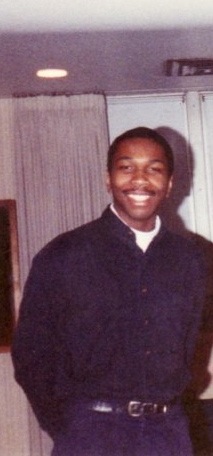Tags
25 Welsford Street, 616 East Lincoln Avenue, Computing and Information Systems, Father-Son Relationship, Financial Aid, Freshman Year, Homelessness, La Guardia Airport, Lothrop Hall, Naivete, Pitt, Pork Neck Bones and Rice, South Oakland, Tuna Fish, unemployment, US Air, Western Union

Lothrop Hall (we lived on the fourth floor in 1987-88), University of Pittsburgh, June 8, 2008. (TheZachMorrisExperience via Wikipedia). Released to the public domain via CC-SA-3.0.
On this day and date twenty-eight years ago was the Saturday end to my freshman year at the University of Pittsburgh. Like today here in the DMV, it was a cool and cloudy day, a day in which I was tired from the year, but hopeful now that I had survived many of my inner doubts and outward troubles to make it to another fall of courses.
But there was a lot of unfinished business at Pitt. And, no, after my first Dean’s List, it wasn’t my grades. Six weeks earlier that year was March 15. That was the deadline for me to put down a $350 deposit to guarantee a dorm room for next year. Otherwise, I’d have to participate in a lottery for one. And the deadline for that was April 30th.
As of that morning, I had more than enough money to cover my deposit, as I’d gotten paid for my eighty or so hours of computer lab work with Pitt from the month of March. That money was way too late now. I knew that I’d have to go back to New York, to Mount Vernon, to find work for the summer, to have the money I needed to find a place to live for the fall when I’d come back to Pitt.

25 Welsford Street, Pittsburgh (where I lived my sophomore and junior years at Pitt), August 2015. (Google Maps).
It wasn’t like I didn’t ask my parents. Mom didn’t have the money, between my idiot stepfather, my four younger siblings and my older brother Darren. Eight-hundred and fifty dollars of AFDC, food stamps, and WIC per month can only be stretched so far in a place as expensive as the New York metropolitan area. And my father Jimme, well, I let him know a month before the dorm reservation deadline that I needed the money. He said at least twice that he had wired me the funds via Western Union. I checked both times with the check cashing place in North Oakland, only to walk out empty-handed.
The timing just didn’t work out. That’s what I told myself, at least. I’d find a better place to live than Lothrop Hall. Between carousing Pitt basketball players, underaged boozers, the more than occasional tokers, and the terrible cafeteria food, I was probably better off living off-campus anyway.
You can convince yourself of a lot of things in the hours before a US Air flight to La Guardia when you’re staring at 120 days of living at 616 and being in Mount Vernon. Both places where I’d barely fit in before thirty-three weeks of college and relative independence. I was about to reclaim my emotionless role as the eldest son, all but running a house that was never mine to run in the first place. The fact of my questionable residential status as a sophomore at the University of Pittsburgh could wait.
Like with so many things going on in my life that leap year, I was terribly wrong. I found myself unemployed for the summer, homeless in Pittsburgh for five days, and broke and malnourished for most of the Fall ’88 semester. From April 30th to the Tuesday before Thanksgiving, I’d live with financial crisis, without a place to lay my head, and with tuna fish sandwiches and pork neck bones and rice as food for many of those days.
I did make friends my freshman year, and I did have friends my sophomore year, some of whom probably would’ve taken me in had they known about my troubles. But that’s the thing about abuse and poverty and race in a country that purports to be great and yet contradicts itself. You seldom tell anyone about anything bad in your life, out of embarrassment or out of pride, because you don’t want to be the living embodiment of a stereotype. Still, when I hinted about my lack of eats in October and November, my friends and even my classmates did help.
Fast-forward to ’92, the spring my father refused to believe that I knocked off my MA in Pitt’s history program in two semesters. He had told my brother Darren and his drinking buddies for years that he had paid my way through college. I also found out about that bit of Jimme braggadocio that spring.

Bumble Bee Tuna in oil (not water for me – still has been almost 28 years since eating), April 30, 2016. (http://www.upcitemdb.com).
When I went over to his place in late June to show him my MA degree, he even tried to tell me how he paid for my BA for four years. “What are you talking about?,” I said.
“My bachelor’s cost $32,000, and my other expenses over four years were another $20,000. In four years, you sent me $480 total,” I yelled, even though my drunk father was only a couple of feet away.
“Naw, naw, naw, I paid, I paid,” my father kept saying, with very little of the confidence than he had displayed before.
The total of my father’s payments for me and college was actually $880, including $480 he Western Union-ed to me my first three semesters. I’d forgotten the $400 I managed to get from him in August ’88 so that I could find a place to live my sophomore year in Pittsburgh. It is true, without that money, and without me surviving my first days in Pittsburgh minus a dorm room, I wouldn’t have finished college. But as a father myself, I’m not sure I’d ever claim credit for that, drunk or sober.















